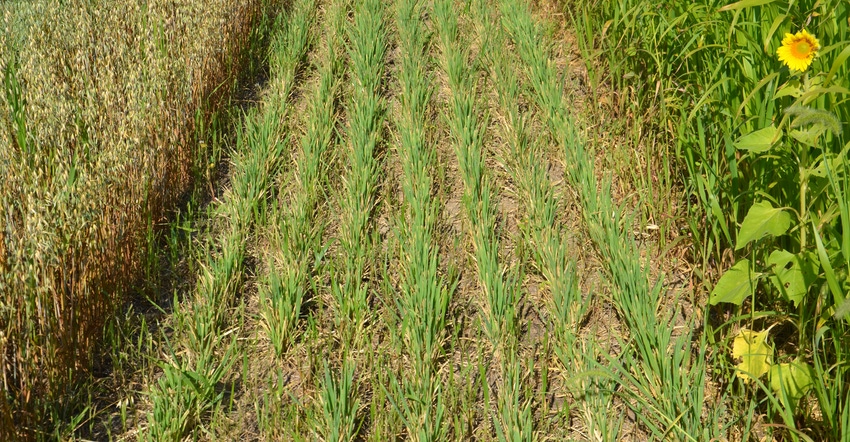February 8, 2019

By Don Donovan
Whether it be hypoxia in the Gulf of Mexico or the Lake Erie algae problem, water quality is in the news frequently these days. While not all problems are laid at the feet of agriculture, the ag industry needs to proactively step to the plate and address its part of the problem.
Here are four things you can do to improve water quality. If farmers collectively convert to these practices, it will make a difference in big-picture problems such as hypoxia in the Gulf of Mexico or algae blooms in the Western Lake Erie Basin, which directly impact farmers and landowners in northeastern Indiana.
1. Implement a never-till system. This is not a no-till system or no-till most of the time — it’s never-till. Many years of soil health benefits can be undone by one tillage pass. It’s important to address your nutrient and soil compaction issues before moving into a never-till system. Using cover crops and adapting your nutrient management are also critical. Never-till will take some management. Find a local no-till farmer to help you be successful.
2. Use cover crops. Benefits of cover crops include reduced soil erosion, more diversity in your cropping system to provide more food and habitat for microbiology in the soil, and year-round growing roots to build soil organic matter and protect the soil. Other benefits are nutrient production and nutrient scavenging, weed suppression as part of an overall integrated pest management strategy, and winter grazing if you have livestock.
If you aren’t already using cover crops, start with something simple — a species such as oats that will winterkill — and then move into more challenging cover crops and mixes. Have a plan and purpose when you develop your mix. Know how you will plant them, terminate them with a contingency plan, and understand cover crops require another level of management.
3. Adapt your nutrient management. As soil health improves, so will nutrient cycling, availability and nutrient use efficiency. Start with as precise of a system of soil testing and nutrient application as possible. Test various nutrient management rates, placements, timings and products. Find what works best to maximize your nutrient use efficiency. This is a great opportunity for strip trials so you can find how to possibly reduce inputs.
4. Install buffers. Your yield monitor likely showed areas that were low-yielding in 2018. Consider seeding those areas down, saving time and inputs, and investing in the rest of your farm. Filter that water before it leaves your farm. There are programs available to help offset these lost acres. You will be doing more to protect the water quality in your community.
These four steps can be completed on any farm with somewhat limited changes in the operation. That partially depends on how you farm today. Although implementing some practices will require greater levels of management over conventional systems, your soil health will improve. You can obtain more information about all four of these strategies to improve water quality at your local Natural Resources Conservation Service and soil and water conservation district offices.
Donovan is a district conservationist with NRCS, based in Parke County, Ind. He writes on behalf of the Indiana Conservation Partnership.
You May Also Like




